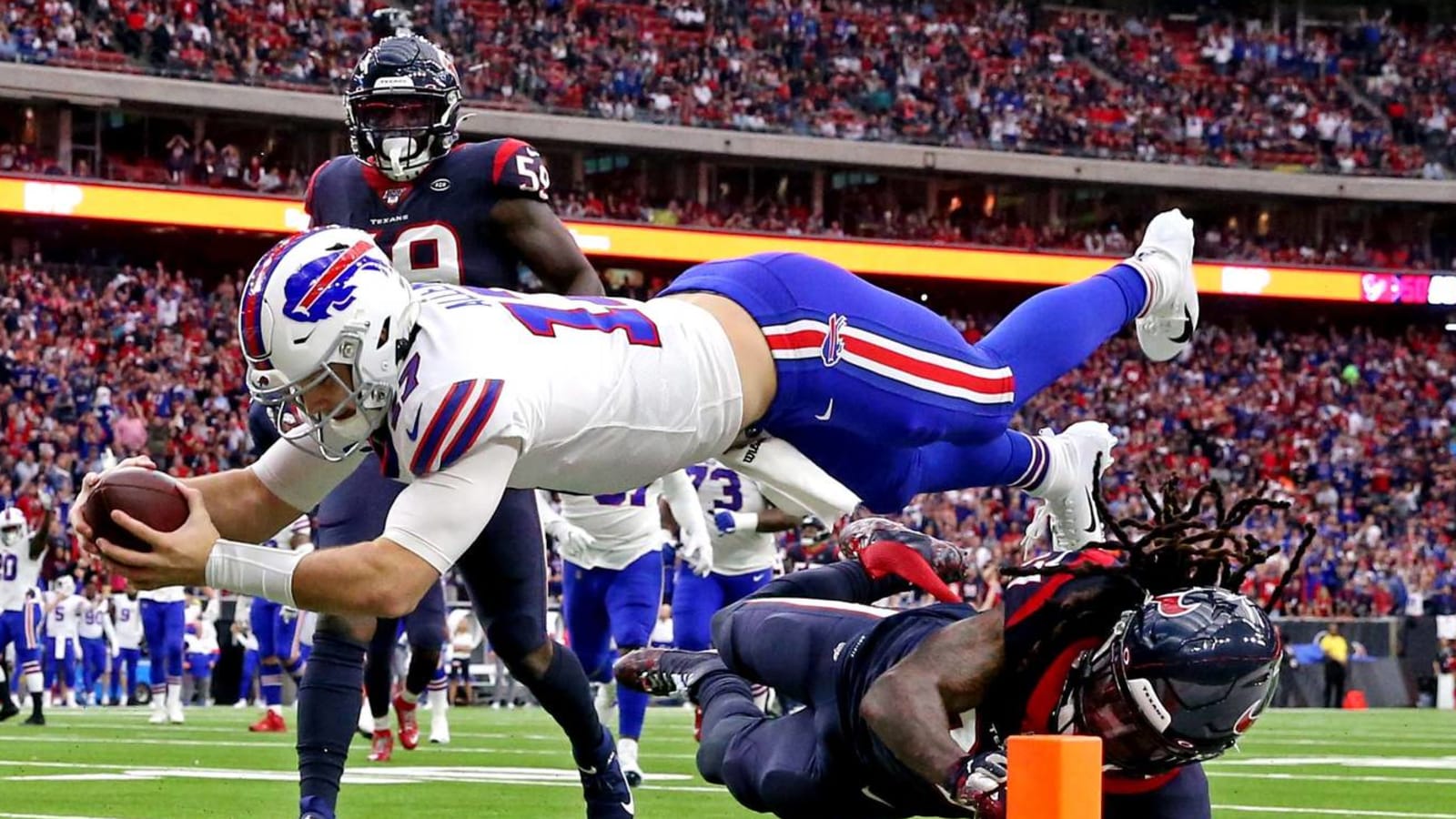
Chief rivals: Who are AFC's best after Kansas City?
Kings of offseason AFC power rankings for much of the past two decades, the Patriots opted not to sign Jameis Winston or Andy Dalton and may have one of the strangest quarterback plans in recent memory. The post-Tom Brady Patriots may be in for a transition year, and after a non-Peyton Manning-quarterbacked team seized their AFC throne for the first time since 2012, a new era for a long-top-heavy conference looks set to begin.
Beyond the defending Super Bowl champion Chiefs, the AFC features several teams whose offseasons vaulted them closer to contender status. In what looks like the conference’s most interesting mix in many years, here is how the top AFC teams stack up going into the summer.
1. Kansas City Chiefs
A combination of the continuity the Chiefs possess and the COVID-19 pandemic tilting the odds toward teams with returning players and coaching staffs strengthens the operation Andy Reid and Co. have built. The Chiefs have cornerstone contracts to address — Patrick Mahomes and Pro Bowler Chris Jones — but they have kept their house in order. In terms of their chances to repeat, the 2020 Chiefs look to be as formidable of a defending champion as the 2014 Seahawks and 2015 Patriots in those offseasons. Kansas City returns 20 starters and has improved at running back and linebacker.
The only quarterback in NFL history to win an MVP and Super Bowl MVP in different seasons in his first two years as a starter, Mahomes is solidly the NFL’s passer of the moment. His top five pass-catchers return, with a dynamic weapon in first-round running back Clyde Edwards-Helaire en route. A player Reid categorized as a rich man’s Brian Westbrook, Edwards-Helaire led all draft-eligible backs with 55 catches last season and was one of college football’s toughest tackling assignments.
A case can be made Kansas City should have addressed its cornerback or linebacker spots at No. 32, but its offense is comically stacked and defense is stable. After ranking sixth in pass-defense DVOA in a season featuring marketed late improvement, the Chiefs’ lower-profile unit is in its best shape entering a season in many years.
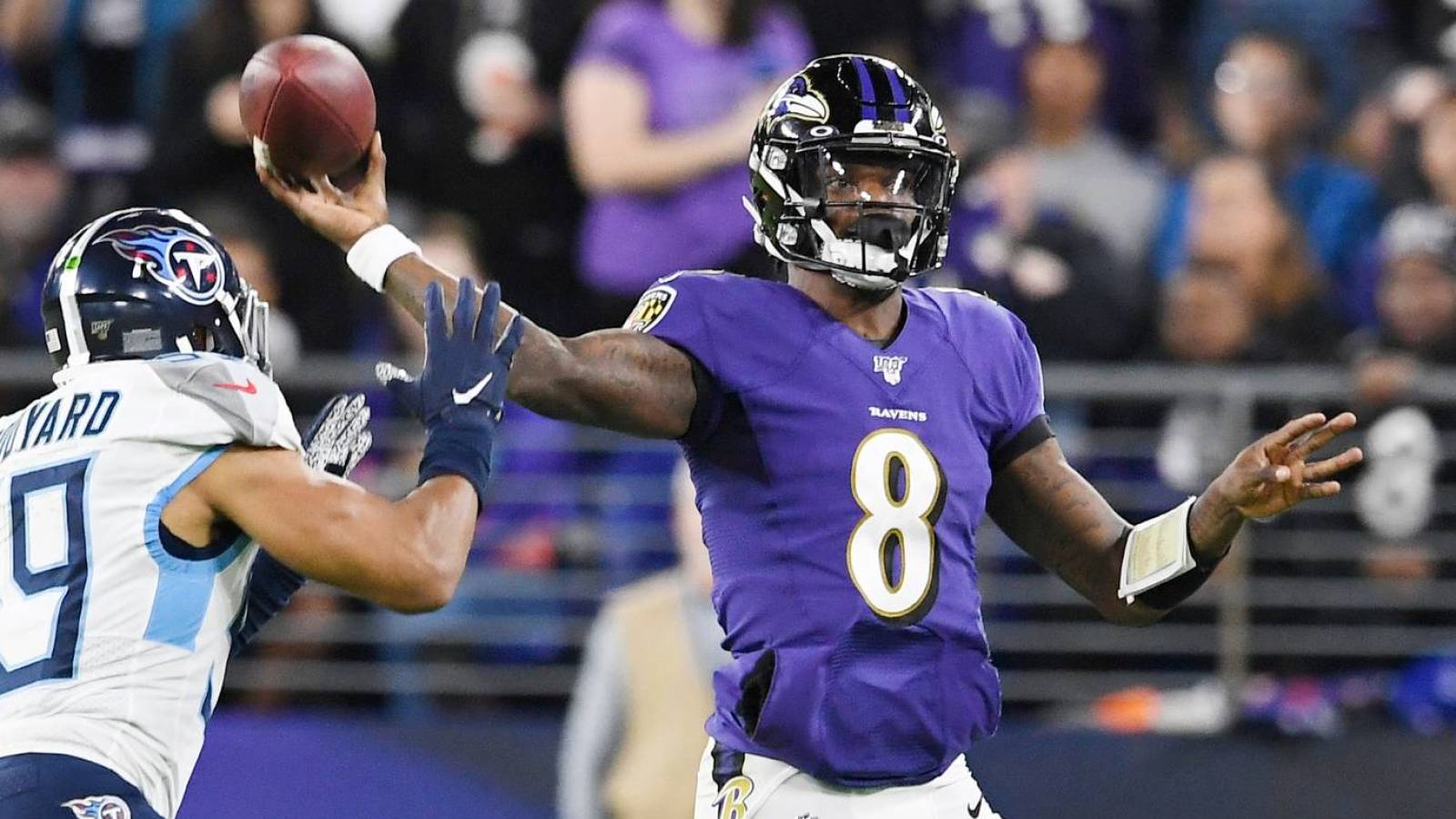
2. Baltimore Ravens
Mahomes' top rival accounted for 43 touchdowns and shattered the NFL season QB rushing record with 1,206 yards in 15 games. Lamar Jackson still has his detractors, and his rushing ability will remain his best facet, but he showed staggering improvement from Year 1 to Year 2. He led Mahomes in Total QBR by more than five points to pace the NFL. With Ravens offensive coordinator Greg Roman not landing a head-coaching job, Jackson should continue to ascend in an offseason in which continuity has never been more important.
Although the Ravens lost the second-best offensive lineman in franchise history (left guard Marshal Yanda) to retirement, they added Ohio State 2,000-yard rusher J.K. Dobbins to a backfield that just broke the NFL’s 41-year-old team season rushing record. Defensively, Baltimore remains deep in its secondary — thanks to Marcus Peters’ extension — and now includes first-round linebacker Patrick Queen. A better bet to fill C.J. Mosley’s shoes than the departed Patrick Onwuasor, Queen bolsters a defense that ranked third in points allowed last season.
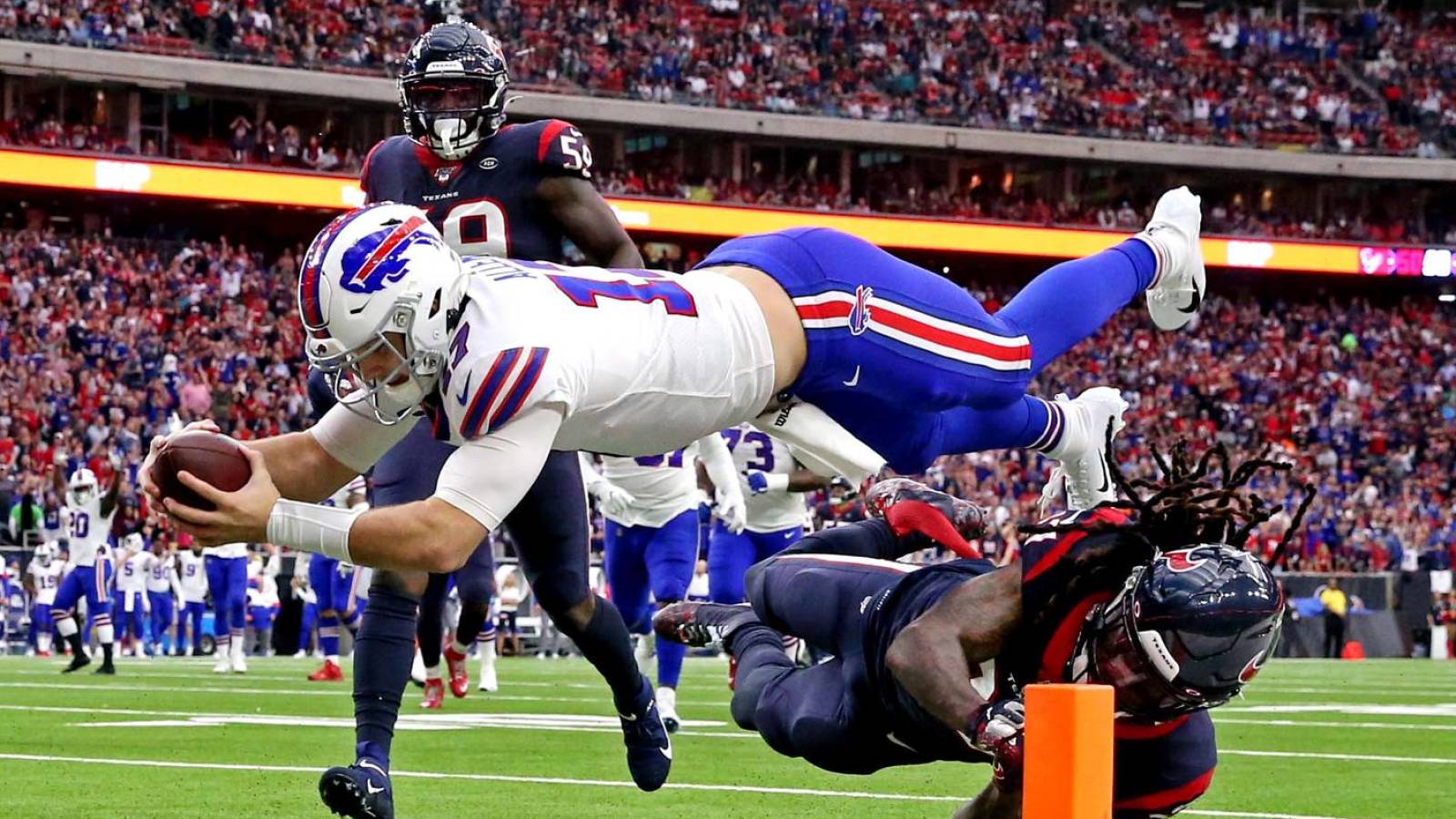
3a. Buffalo Bills
Although the Bills lost their top two sackers from last season — defensive end Shaq Lawson and defensive tackle Jordan Phillips, who combined for 16 QB drops — they reshuffled their chips and will re-emerge deeper up front. Buffalo signed ex-Carolina defensive end Mario Addison, whose 39 sacks since 2016 rank 11th. (Lawson’s 16.5 rank 73rd.) The Bills also added versatile ex-Seahawk Quinton Jefferson, who should play defensive end and defensive tackle. They drafted potential first-round end A.J. Epenesa in Round 2 and have D-tackle Harrison Phillips, whose potential breakout was cut short by an ACL tear. Ed Oliver now leads one of the NFL's sneaky-deep groups.
That new-look defensive line joins one of the NFL’s best back sevens, which led the way in producing second- and fifth-place DVOA rankings the past two years. It will get more work in practice, with trade acquisition Stefon Diggs now Buffalo’s WR1. One of the NFL’s premier route-runners, Diggs should pair well with deep threat John Brown and slot cog Cole Beasley. Buffalo also added Utah running back Zack Moss, whose power made life difficult for Mountain West Conference defenders, in Round 3. No disrespect to the enduring Frank Gore, but he should give the Bills more explosiveness alongside Devin Singletary.
Buffalo’s Super Bowl hopes stop without Josh Allen taking another step forward. But the accuracy-challenged passer did account for 29 TDs in 15 games and improve his completion percentage by six points from 2018. By adding Diggs, the Bills will see a clearer picture of Allen's trajectory.
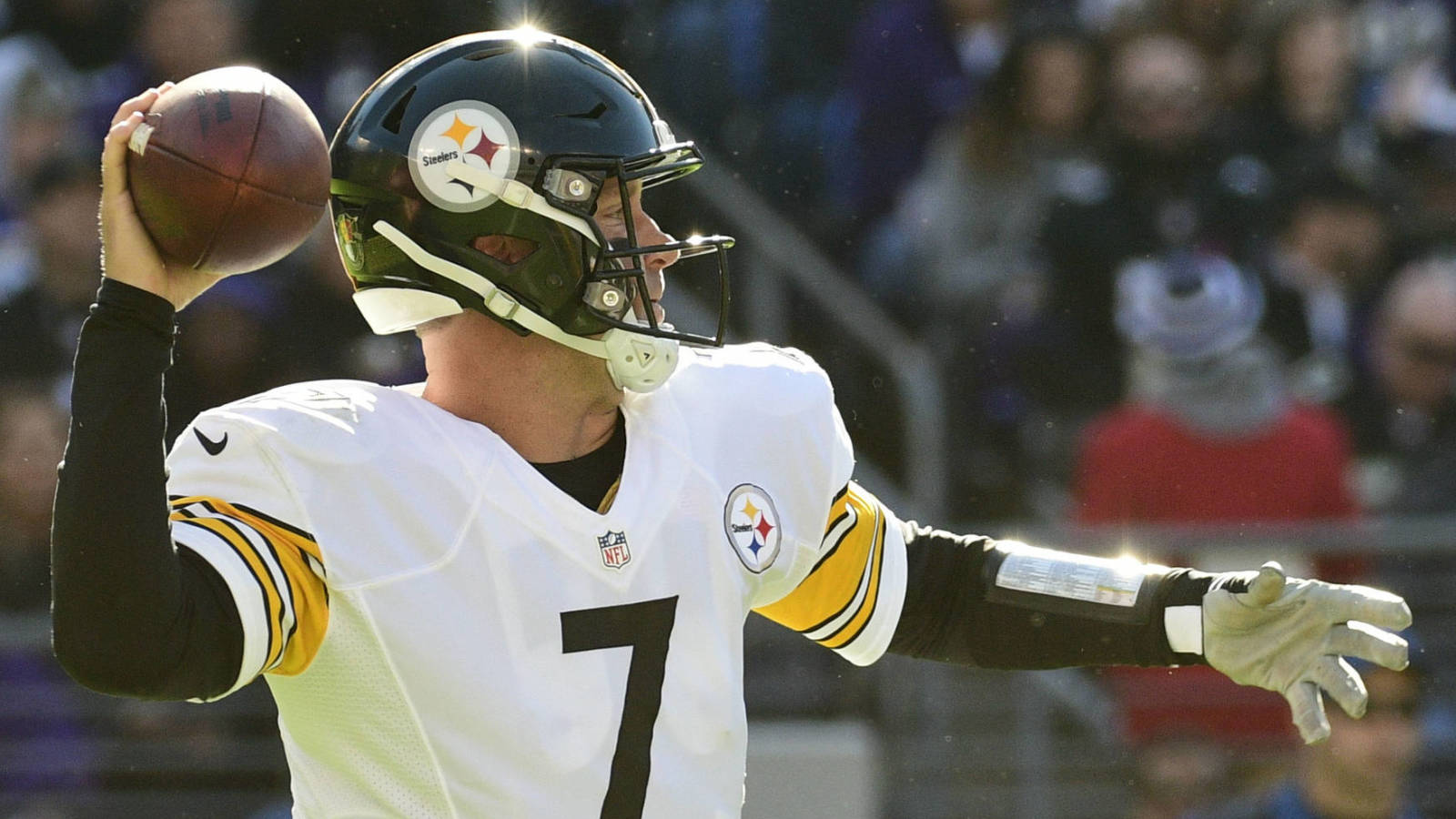
3b. Pittsburgh Steelers (if Ben Roethlisberger is healthy)
In this reality, Roethlisberger enters the season recovered from the elbow injury that harpooned the 2019 Steelers. Big Ben did not look great without Antonio Brown during his brief sample last season, but the Steelers dropped from sixth in offensive DVOA in 2018 to 32nd without their future Hall of Fame passer. In that time, the team retooled on defense and now has tight end Eric Ebron and yet another Day 2 wide receiver in second-round size-speed freak Chase Claypool. The Steelers are much better equipped to support Roethlisberger defensively than they were from 2015-18.
The defense finished third in defensive DVOA last year and led the way to eight wins despite the Steelers getting basement-level quarterback play from Mason Rudolph and Devlin Hodges. The Steelers feature one of the league’s best 3-4 defensive end tandems in Pro Bowler Cam Heyward and the back-from-injury Stephon Tuitt and will have T.J. Watt wingman Bud Dupree back — being one of 13 teams to unholster their franchise tag — to form a high-end edge duo. Injecting Roethlisberger into this mix should vault Pittsburgh back into contention.
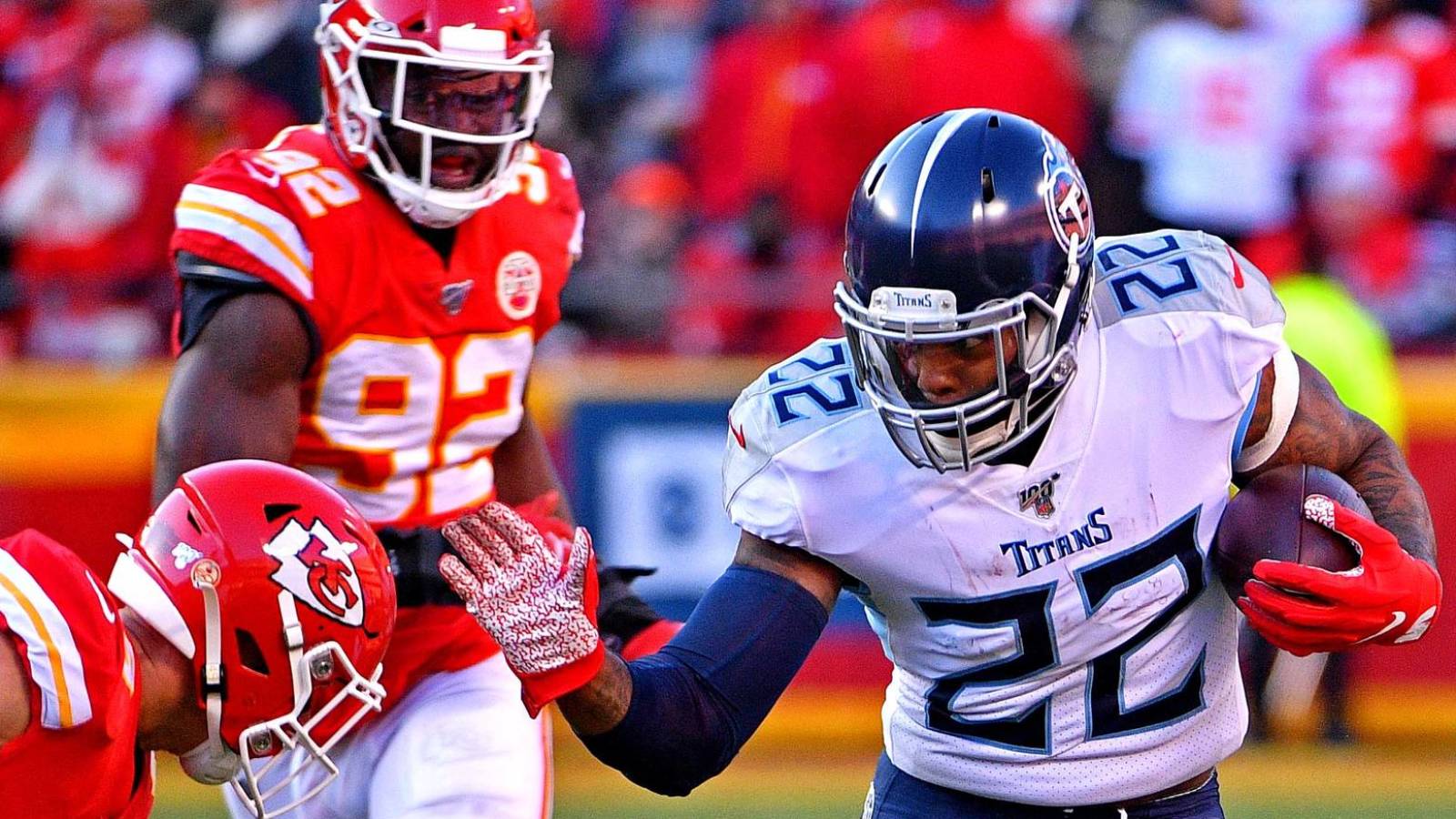
5. Tennessee Titans
Attempting to return to the playoffs, the Titans kept Ryan Tannehill and Derrick Henry and used their first-round pick on a right tackle (Isaiah Wilson) to replace free-agency defector Jack Conklin. Tannehill stunningly emerged from a career of Dolphins mediocrity and knee injuries to spearhead a Titans resurgence. His 9.6 yards per attempt ranked ninth all time, and his 13.58 yards per attempt on play-action passes were easily No. 1 last season. Employing one of the most menacing ball-carriers in modern NFL history ignites Tennessee’s play-action game, and Henry could have an improved sidekick to keep him fresh in third-round rookie Darrynton Evans.
The Titans will have well-paid corner Malcolm Butler back and drafted LSU’s Kristian Fulton in Round 2. Despite underwhelming as a Falcons top-10 pick, free-agent edge signing Vic Beasley should be an upgrade as Harold Landry’s copilot. Tennessee gave away five-time Pro Bowl defensive lineman Jurrell Casey in a salary-dump trade, but the team should be better-equipped to outdo its No. 21 pass-defense DVOA ranking.
Tannehill’s injury past makes the Titans an unstable contender, but the soon-to-be 32-year-old passer’s new contract stipulates he is the Titans’ plan through at least 2021.
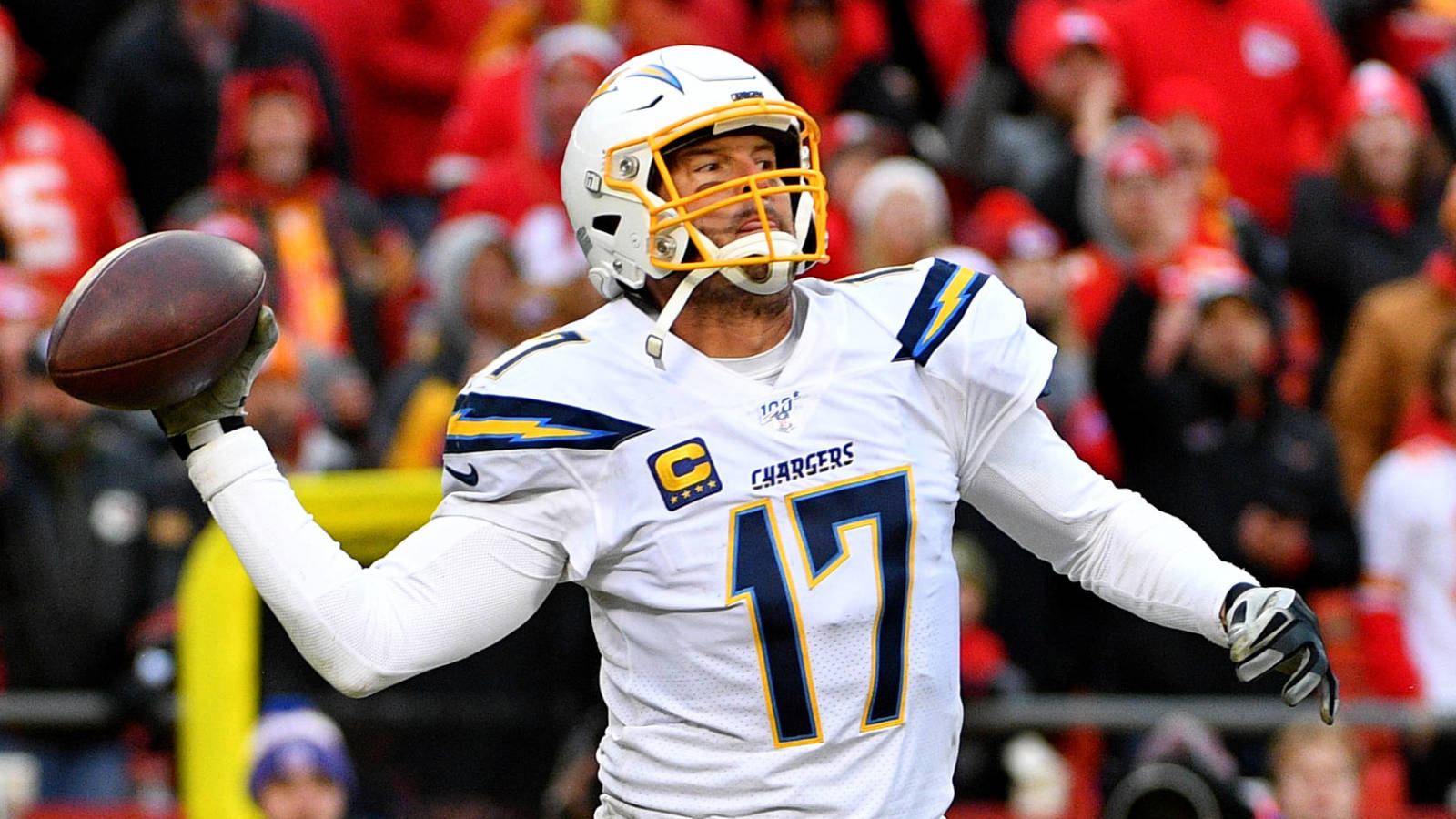
6. Indianapolis Colts
Upgrading at running back, wide receiver, defensive tackle and quarterback, the Colts are a well-run team that finally used its cap space to dramatically improve its starting lineup. QBR’s No. 7-ranked passer in 2018, Philip Rivers struggled last year. But Pro Football Focus still rated the longtime Charger eighth in deep-passing accuracy — compared to Jacoby Brissett’s second-to-last-place assessment — and the likely Hall of Famer will go from Baltic Ave. to Park Place in offensive line quality. The Chargers’ sieve of an O-line hampered their immobile quarterback; the Colts’ front returns all five starters from what Pro Football Focus rated as 2019’s No. 3 overall blocking group.
The Colts won seven games despite Andrew Luck’s late-August retirement and should have won two or three more were it not for Adam Vinatieri finally hitting a wall at age 46. They now have a top-five defensive tackle (DeForest Buckner), a running back who enters the NFL after a historically dominant college career and a 4.39-second 40-yard dash (Jonathan Taylor) and No. 34 overall pick Michael Pittman Jr., the former Southern Cal WR. He and 2019 second-rounder Parris Campbell, who saw injuries mar his rookie slate, will enhance Indianapolis’ aerial capabilities. The Colts should be receiving more attention.
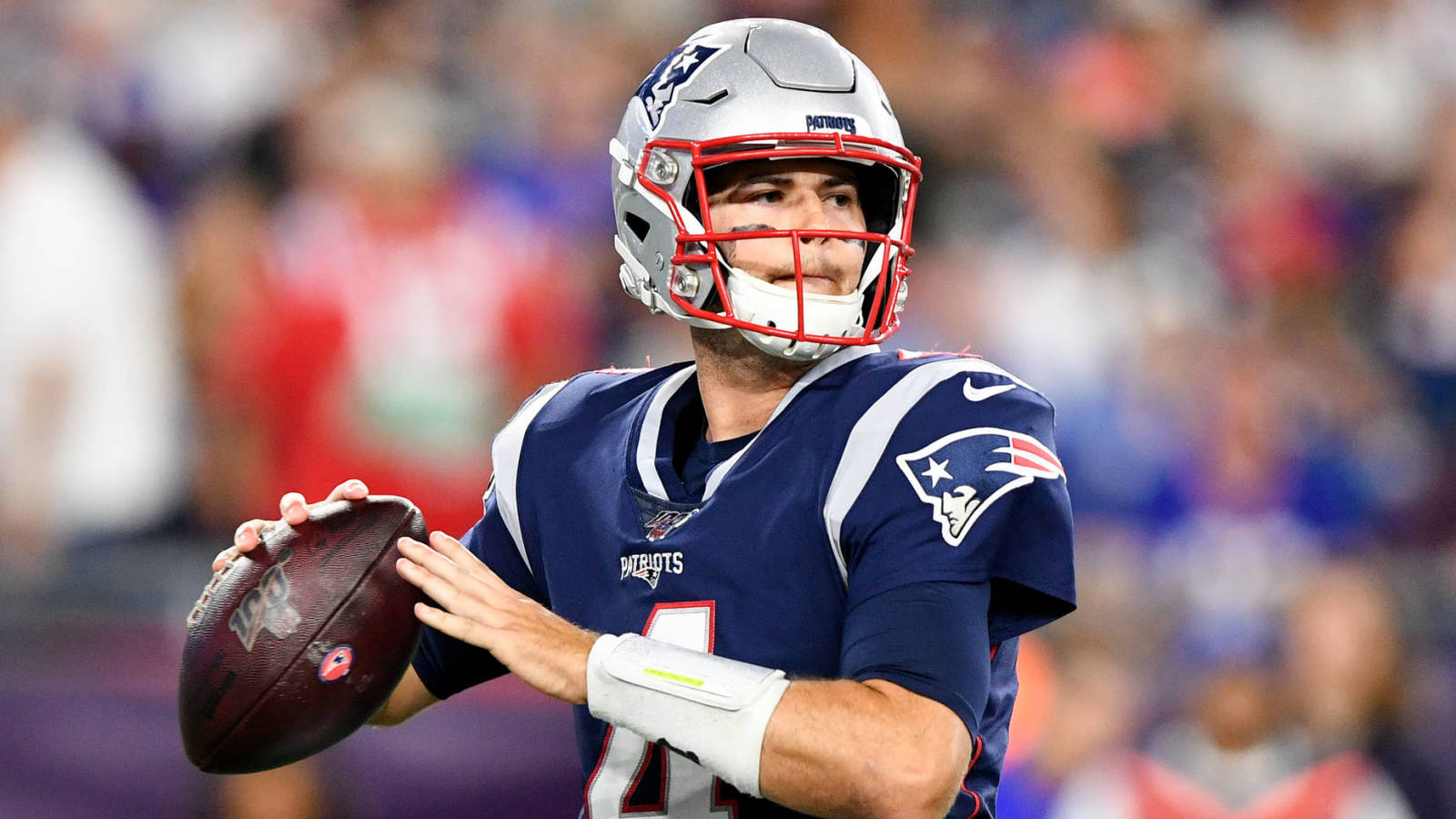
The Patriots look worse and still have an aging roster. Top pass rushers Jamie Collins and Kyle Van Noy are gone. Bill Belichick successfully coped without departed edges Chandler Jones and Trey Flowers in recent years but had an all-time great quarterback on which to rely. The Patriots’ 11-5 Matt Cassel season in 2008 — and Belichick’s legendary credentials — make 2020’s iteration impossible to deem a non-threat. But the Pats offense declined considerably with Tom Brady in 2019. What will happen now that Jarrett Stidham — a fourth-round pick with four NFL pass attempts and zero 20-touchdown pass seasons in college — appears likely to step in?
The Pats did not draft a wide receiver and used their first two picks on defense. Belichick’s most recent defense led the NFL in DVOA, but the Pats’ post-Rob Gronkowski offense struggled once competition stiffened. New England’s inconsistent skill-position cadre returns, and acclaimed offensive line coach Dante Scarnecchia retired for a second time. Passing on Winston and Dalton, and bringing back only journeyman Brian Hoyer to compete with Stidham, the Pats appear to be aiming toward 2021 rather than attempting to maintain what they had.
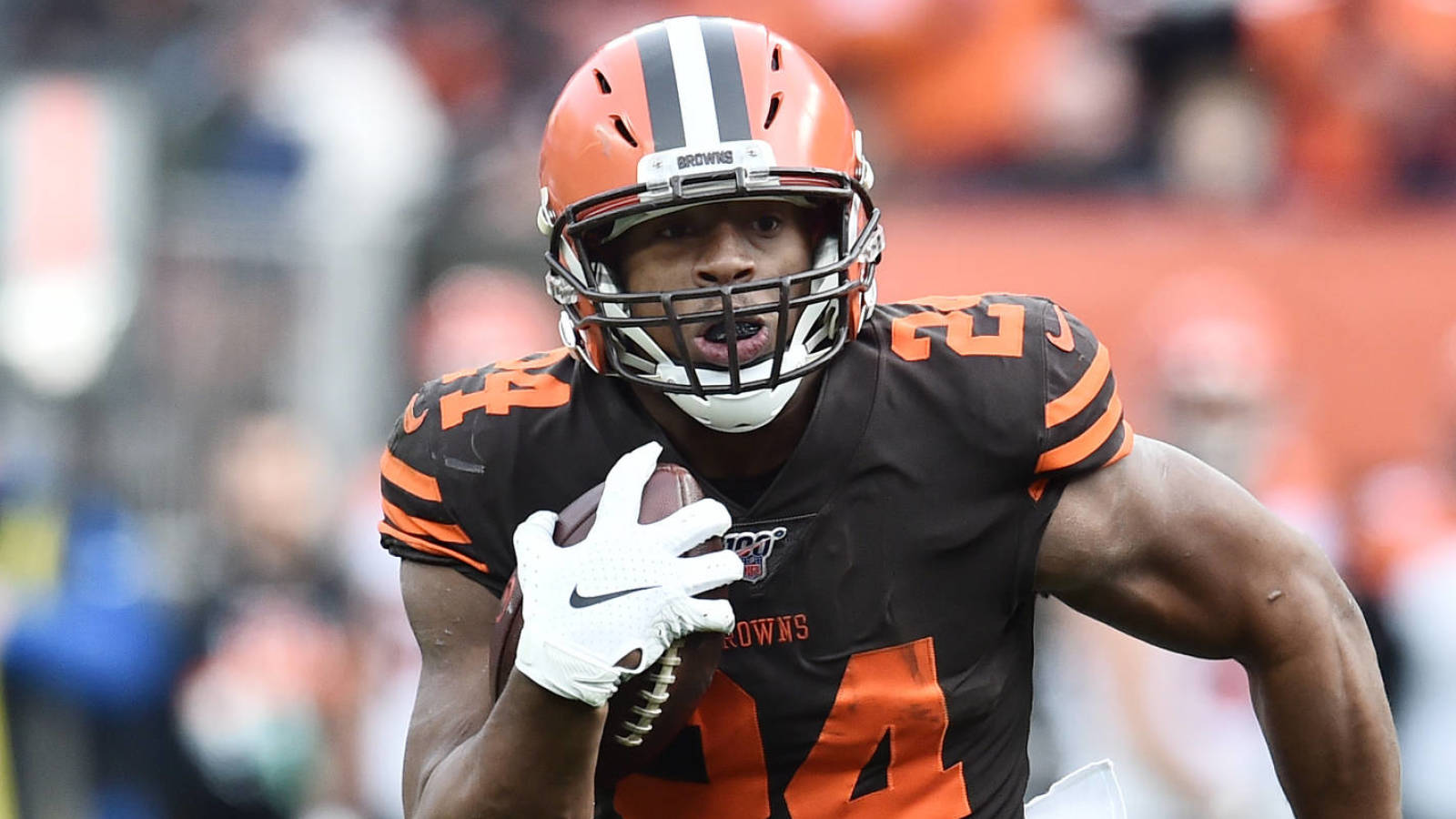
8. Cleveland Browns
One of the great overhyped teams of our time crash-landed at 6-10 last season. Ex-Vikings offensive coordinator Kevin Stefanski should bring more stability than the overmatched Freddie Kitchens, and owner Jimmy Haslam’s sixth GM in eight years (Andrew Berry) addressed the John Dorsey-built team’s biggest weakness. First-round pick Jedrick Wills and coveted free agent Jack Conklin are now in place at tackle, which will give Baker Mayfield a better chance to reestablish a career that careened off course in 2019.
Saddled with one of the league’s worst tackle tandems, Mayfield threw 21 INTs. This would have received more attention had Winston not thrown 30. But Mayfield’s skill corps now has ex-Falcon tight end Austin Hooper as its fifth-most exciting weapon — behind wideouts Odell Beckham Jr. and Jarvis Landry and running backs Nick Chubb and Kareem Hunt. The Browns boast more defensive depth than last season — needed after ranking 30th in DVOA run defense — and will have DE Myles Garrett back after last season’s ugly incident against the Steelers. Cleveland oozes post-hype sleeper status.
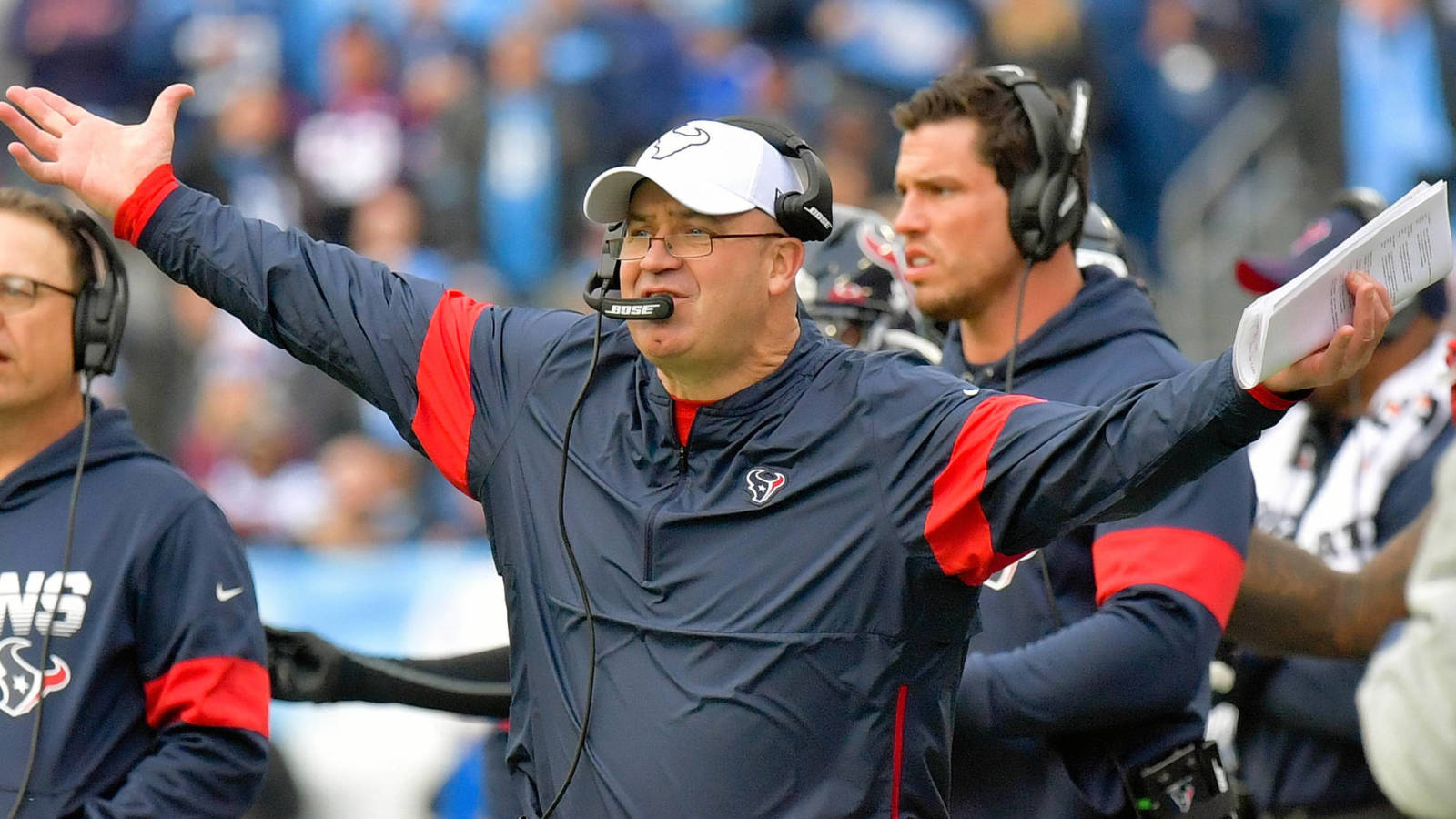
9. Houston Texans
Although they went 10-6 and won another AFC South title, the Texans finished 2019 with a minus-7 scoring differential. And they traded the third-best player in franchise history without collecting a first-round pick. Post-DeAndre Hopkins, this franchise’s stock has absorbed savage hits. If middling head coach-turned-chaotic GM Bill O’Brien can prove skeptics wrong, it will become a hallmark moment in “I told you so” annals ... because the Texans’ moves created an O’Brien-against-the-world dynamic.
Imported wide receivers Brandin Cooks and Randall Cobb figure to make Kenny Stills a trade chip (hello, Packers), but it is safe to say Houston keeping its Hopkins-Stills-Will Fuller trio would have frightened defensive coordinators more than what it'll deploy this season. Cooks has suffered four concussions since February 2018 and currently makes more money than Hopkins. Cobb’s $9M-per-year deal doubled as one of the more stunning free-agency agreements. David Johnson totaled 2,118 scrimmage yards in his All-Pro 2016 slate; the well-paid ex-Cardinal has 2,191 since.
The Texans defense also ranked 26th in DVOA last year but received no notable free agency augmentations. No. 9 may even be a generous ranking, but QB Deshaun Watson is a special talent. He deserves better.
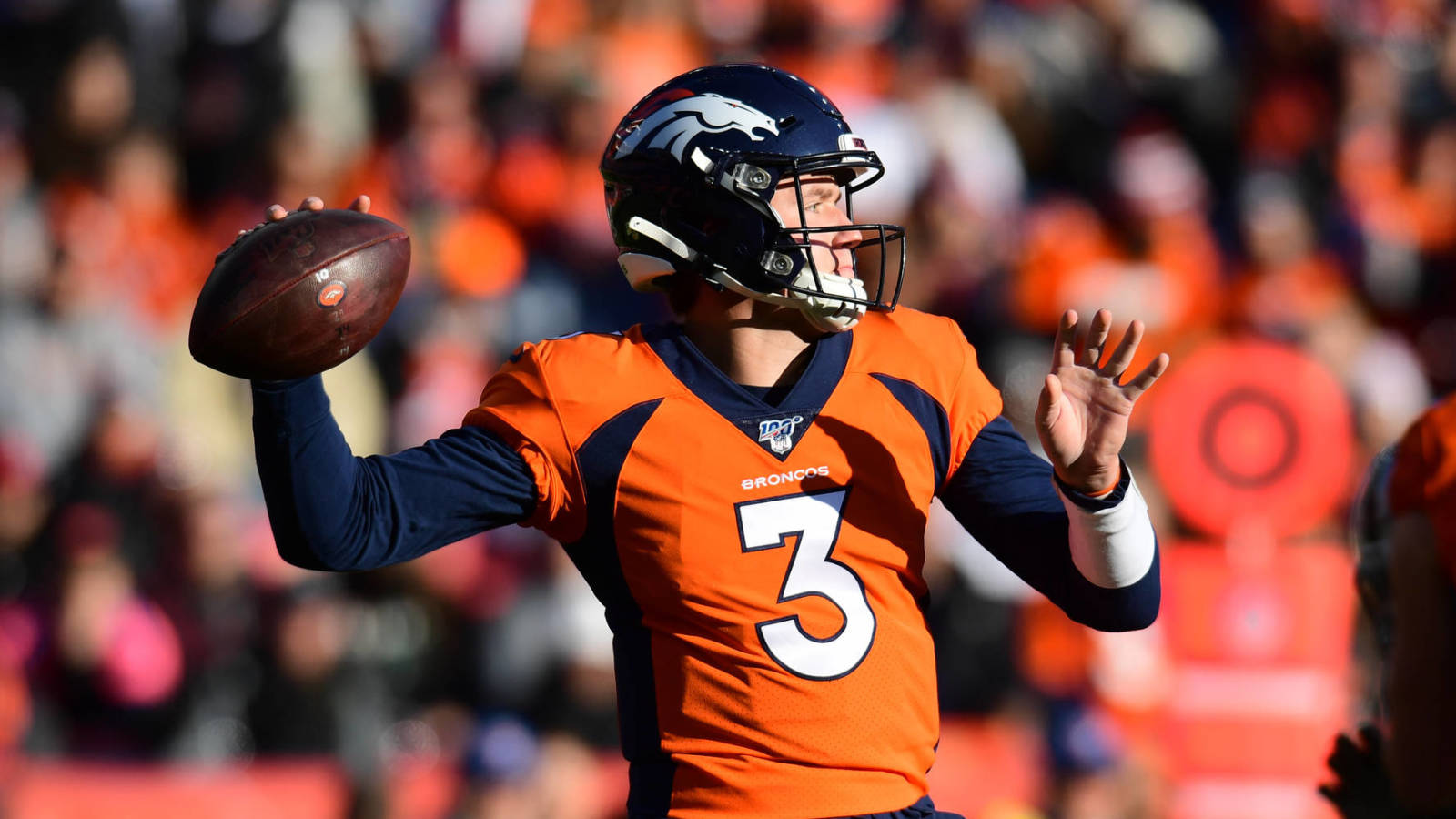
10a. Denver Broncos
A case can be made the Chargers belong here, but their veteran-laden roster includes a quarterback transition — Rivers to either stopgap veteran Tyrod Taylor or first-rounder Justin Herbert — at the wrong time. The Broncos are also transitioning during the coronavirus-altered offseason, having hired Pat Shurmur as offensive coordinator. But they added multiple Pro Bowlers on defense — defensive lineman Jurrell Casey and cornerback A.J. Bouye — and loaded up on offense to determine Drew Lock’s viability. Denver’s signing of RB Melvin Gordon seemed superfluous, given Phillip Lindsay’s status, but its first- and second-round picks of wideouts Jerry Jeudy and K.J. Hamler could be significant.
After trading Emmanuel Sanders, the Broncos were down to only Courtland Sutton as a reliable wideout last season. Jeudy is one of the most polished receivers to enter the draft in years; that will be critical in this unusual offseason. Hamler was one of college football’s best after-the-catch players, and the ex-Penn State slot threat will be able to assimilate gradually thanks to Sutton, Jeudy and emerging tight end Noah Fant entrenched as the Broncos’ top three aerial playmakers.
Equipped with a Vic Fangio-led defense that will have edge rusher Bradley Chubb back after an ACL tear, the Broncos will be a trendy sleeper pick. Given more weaponry than any Bronco QB since Peyton Manning in 2014, Lock will need to justify it.
10b. Pittsburgh Steelers (if Roethlisberger does not recover in time)
Big Ben is 38 and coming off a severe injury from which he has not yet finished rehabbing. But GM Kevin Colbert did not indicate signing a veteran backup — like Cam Newton — was on the radar. With Rudolph and Hodges tying for last in Next Gen Stats’ average completed air yards metric (4.6) last season, Roethlisberger’s health will determine if Pittsburgh can truly contend.
More must-reads:
- Watson contract could cause NFL financial earthquake
- Pass/fail: Assessing NFL's best, worst quarterback situations
- The 'Most passes thrown by NFL season' quiz
Breaking News
Trending News
Customize Your Newsletter
 +
+
Get the latest news and rumors, customized to your favorite sports and teams. Emailed daily. Always free!








